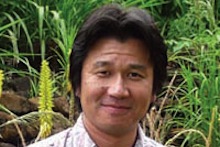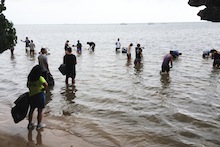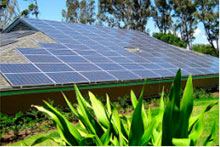
Issue 184 | October 14, 2014 | Archive
News & Events
Get Educated About Educating
 Staff, faculty,
post-docs, and grad students who are interested in current instructional
approaches are invited to the latest installments in this fall’s Instructional
Innovations Workshop Series. In the second workshop of the series, Kavita
Rao, of the College of Education, will speak on “Universal Instructional Design”
on Wednesday, October 15, 3:30–4:30 p.m. in Ag Sci 219. Dr. Rao will be
discussing educational approaches that address more learning styles than
conventional lecturing does, a timely and important subject. Also added to workshop
schedule is a presentation by Jinan Banna (HNFAS) on Wednesday, October 22, also 3:30–4:30 p.m. in Ag
Sci 219. Jinan’s topic is qualitative data analysis, which is
particularly useful for individuals who wish to use eCAFE or other survey data
for research purposes.
Staff, faculty,
post-docs, and grad students who are interested in current instructional
approaches are invited to the latest installments in this fall’s Instructional
Innovations Workshop Series. In the second workshop of the series, Kavita
Rao, of the College of Education, will speak on “Universal Instructional Design”
on Wednesday, October 15, 3:30–4:30 p.m. in Ag Sci 219. Dr. Rao will be
discussing educational approaches that address more learning styles than
conventional lecturing does, a timely and important subject. Also added to workshop
schedule is a presentation by Jinan Banna (HNFAS) on Wednesday, October 22, also 3:30–4:30 p.m. in Ag
Sci 219. Jinan’s topic is qualitative data analysis, which is
particularly useful for individuals who wish to use eCAFE or other survey data
for research purposes.
Woo-hoo! Food Day!
 Food is fabulous, so join the UH Dietetic Interns in
celebrating the fourth annual Food Day on Thursday, October 23, from 11:00 am to
1:30 p.m. at the Manoa Campus Center Ballroom.
Food Day is a nationwide event to build awareness of healthy,
affordable, and sustainable foods. Learn
from guest speakers about natural farming, sustainability, and recycling tips;
visit booths and participate in activities; win a free prize by playing fun
games; and enjoy healthy food samples! For more information and to RSVP, visit
the Food Day at UH Manoa web page. Hooray for food!
Food is fabulous, so join the UH Dietetic Interns in
celebrating the fourth annual Food Day on Thursday, October 23, from 11:00 am to
1:30 p.m. at the Manoa Campus Center Ballroom.
Food Day is a nationwide event to build awareness of healthy,
affordable, and sustainable foods. Learn
from guest speakers about natural farming, sustainability, and recycling tips;
visit booths and participate in activities; win a free prize by playing fun
games; and enjoy healthy food samples! For more information and to RSVP, visit
the Food Day at UH Manoa web page. Hooray for food!
Contribute for a Cause, Get Some Halloween Goodies
 Get ready for Halloween and contribute to a good cause at
the pre-Halloween Candy Bar and Bake Sale on Friday, October 17, in Gilmore 212. Just $5 gets you a jar that you can fill with all your favorite sweets, and all proceeds go to swell CTAHR’s contribution to the 2014 Aloha United Way
Campaign. Any bakers are encouraged to bring contributions to the bake sale—just bring your tempting baked morsels to Gilmore 212 at 1:00. If you’d like to donate (money, that is) but can’t make the sale (darn!), you can use
the E-Pledge system (password: auw2014), or donate with traditional paper forms
available from the Planning and Management Systems Office in Gilmore 214. For
more information on the E-Pledge system, visit the Manoa AUW page.
Get ready for Halloween and contribute to a good cause at
the pre-Halloween Candy Bar and Bake Sale on Friday, October 17, in Gilmore 212. Just $5 gets you a jar that you can fill with all your favorite sweets, and all proceeds go to swell CTAHR’s contribution to the 2014 Aloha United Way
Campaign. Any bakers are encouraged to bring contributions to the bake sale—just bring your tempting baked morsels to Gilmore 212 at 1:00. If you’d like to donate (money, that is) but can’t make the sale (darn!), you can use
the E-Pledge system (password: auw2014), or donate with traditional paper forms
available from the Planning and Management Systems Office in Gilmore 214. For
more information on the E-Pledge system, visit the Manoa AUW page.
To Satellites and Beyond!
 Join Tomoaki Miura (NREM) for his seminar “Developing a New
Satellite Program—What We Do for It” on Wednesday, October 15, at 3:30 p.m. in
Sherman 103. The current weather forecasting systems in the U.S. routinely utilize
remotely sensed data obtained from satellite sensors operated by the National
Oceanic and Atmospheric Administration (NOAA), while one significant tool
used in the U.S. Global Change Research program is a set of global satellite
sensors developed by NASA. Since 2011, Tomoaki has served on a joint NOAA-NASA science team for the development of the next generation satellite
program of the U.S. Joint Polar Satellite System (JPSS). In this seminar, he
will present an overview of the JPSS program and discuss his roles within it.
Join Tomoaki Miura (NREM) for his seminar “Developing a New
Satellite Program—What We Do for It” on Wednesday, October 15, at 3:30 p.m. in
Sherman 103. The current weather forecasting systems in the U.S. routinely utilize
remotely sensed data obtained from satellite sensors operated by the National
Oceanic and Atmospheric Administration (NOAA), while one significant tool
used in the U.S. Global Change Research program is a set of global satellite
sensors developed by NASA. Since 2011, Tomoaki has served on a joint NOAA-NASA science team for the development of the next generation satellite
program of the U.S. Joint Polar Satellite System (JPSS). In this seminar, he
will present an overview of the JPSS program and discuss his roles within it.
Turning the Tide on Tilapia
 Benjamin Moorman (MBBE) will defend his PhD dissertation,
“The Effects of Rearing Mozambique Tilapia in a Tidally-Changing Salinity on
Osmoregulation and Growth” on Friday, October 24, at 1:30 p.m. in St. John 11. His
committee members are E. Gordon Grau, Andre Seale, Darren Lerner, Dulal
Borthakur (MBBE) and Florence Thomas. As Benjamin explains, the native distribution of Mozambique
tilapia, Oreochromis mossambicus, is
characterized by estuarine areas subject to salinity variations between fresh
water (FW) and seawater (SW) with tidal frequency. The immunohistochemistry
results of this study revealed that tilapia reared in tidally changing
salinities maintain SW-type ionocytes in both the FW and SW phases of the tidal
cycle. The study also indicated that tilapia reared in tidally changing
salinities can compensate for large changes in external salinity while
maintaining PRL expression and FW ion transporters, pumps, and channels within
a narrow range in both phases of the tidal cycle that are closer to the levels
observed in SW-acclimated tilapia. Just one more way this fish proves that it’s able to survive under a wide variety of conditions!
Benjamin Moorman (MBBE) will defend his PhD dissertation,
“The Effects of Rearing Mozambique Tilapia in a Tidally-Changing Salinity on
Osmoregulation and Growth” on Friday, October 24, at 1:30 p.m. in St. John 11. His
committee members are E. Gordon Grau, Andre Seale, Darren Lerner, Dulal
Borthakur (MBBE) and Florence Thomas. As Benjamin explains, the native distribution of Mozambique
tilapia, Oreochromis mossambicus, is
characterized by estuarine areas subject to salinity variations between fresh
water (FW) and seawater (SW) with tidal frequency. The immunohistochemistry
results of this study revealed that tilapia reared in tidally changing
salinities maintain SW-type ionocytes in both the FW and SW phases of the tidal
cycle. The study also indicated that tilapia reared in tidally changing
salinities can compensate for large changes in external salinity while
maintaining PRL expression and FW ion transporters, pumps, and channels within
a narrow range in both phases of the tidal cycle that are closer to the levels
observed in SW-acclimated tilapia. Just one more way this fish proves that it’s able to survive under a wide variety of conditions!
Spotlight on Our Community
Cleaning/Composting Combo
 Sometimes green can get even greener! On September 27, a group of students from NREM/PEPS 210
Introduction to Environmental Science participated in a clean-up event that
removed invasive algae from Kane‘ohe Bay. More than one ton of algae was
gathered and taken to the Waimanalo Research Station for use in compost. These
algae are high in minerals that are difficult to find in the environment and can be used to make some sweet, bioactive soil amendment. In fact, CTAHR
has been employing these algae for more than 3 years—and helping to make the bay a happier place for native sea creatures and plants at the same time. The student
group enjoyed their day at this service learning activity. Great job!
Sometimes green can get even greener! On September 27, a group of students from NREM/PEPS 210
Introduction to Environmental Science participated in a clean-up event that
removed invasive algae from Kane‘ohe Bay. More than one ton of algae was
gathered and taken to the Waimanalo Research Station for use in compost. These
algae are high in minerals that are difficult to find in the environment and can be used to make some sweet, bioactive soil amendment. In fact, CTAHR
has been employing these algae for more than 3 years—and helping to make the bay a happier place for native sea creatures and plants at the same time. The student
group enjoyed their day at this service learning activity. Great job!
Bringing the Community Together
 The
Waimanalo Research Station welcomes Ilima Ho-Lastimosa as the new community
coordinator for the Waimanalo Learning Center. Ilima is a lifelong resident of
Waimanalo and a Master Gardener, and she has extensive hands-on experience in
community development. She is already busy strengthening our existing
relationships and developing new ones. In addition to her duties as the
community coordinator, Ilima is currently a master’s candidate in the UH School
of Social Work with a focus on behavioral and mental health, as well as the
executive director and director of operations for God’s Country Waimanalo, the
Waimanalo Ahupua‘a coalition that works to perpetuate traditional Hawaiian
culture. Welcome, Ilima! CTAHR and the Station are lucky to have you!
The
Waimanalo Research Station welcomes Ilima Ho-Lastimosa as the new community
coordinator for the Waimanalo Learning Center. Ilima is a lifelong resident of
Waimanalo and a Master Gardener, and she has extensive hands-on experience in
community development. She is already busy strengthening our existing
relationships and developing new ones. In addition to her duties as the
community coordinator, Ilima is currently a master’s candidate in the UH School
of Social Work with a focus on behavioral and mental health, as well as the
executive director and director of operations for God’s Country Waimanalo, the
Waimanalo Ahupua‘a coalition that works to perpetuate traditional Hawaiian
culture. Welcome, Ilima! CTAHR and the Station are lucky to have you!
New Publications
How We Feel About Renewable Energy
 The Center on the Family recently published a research brief
entitled “Public Attitudes About Renewable Energy in Hawai‘i” that is
now available for download. The report, using data gathered in the course of a project by Andrew
Hashimoto (MBBE) to research high-yield feedstock and biomass technology,
highlights findings from a representative survey of 1,214 Hawai‘i residents
conducted for the purpose of assessing public attitudes about different
technologies for generating electricity. Renewable energy (RE) technologies
were very highly favored: 97% of the public supported increased development of
at least some forms of RE in our state. Solar and wind power were the most
widely accepted forms of RE (garnering 92% and 86% favorable opinions, respectively),
followed by hydroelectric (76%) and geothermal power (75%). Municipal waste
(58%) and biomass combustion (53%) were less widely endorsed but were still
acceptable to the majority of residents. Only a small segment of the public endorsed
conventional sources of energy generation—nuclear (22%), oil (13%), and coal
(12%). There were modest differences in attitudes as a function of age, gender,
and education, but no differences across counties. Support for RE was motivated
by concerns for environmental protection, sustainability, and energy
independence and by frustration with local energy prices. Let’s hope that the powers-that-be in the state are listening!
The Center on the Family recently published a research brief
entitled “Public Attitudes About Renewable Energy in Hawai‘i” that is
now available for download. The report, using data gathered in the course of a project by Andrew
Hashimoto (MBBE) to research high-yield feedstock and biomass technology,
highlights findings from a representative survey of 1,214 Hawai‘i residents
conducted for the purpose of assessing public attitudes about different
technologies for generating electricity. Renewable energy (RE) technologies
were very highly favored: 97% of the public supported increased development of
at least some forms of RE in our state. Solar and wind power were the most
widely accepted forms of RE (garnering 92% and 86% favorable opinions, respectively),
followed by hydroelectric (76%) and geothermal power (75%). Municipal waste
(58%) and biomass combustion (53%) were less widely endorsed but were still
acceptable to the majority of residents. Only a small segment of the public endorsed
conventional sources of energy generation—nuclear (22%), oil (13%), and coal
(12%). There were modest differences in attitudes as a function of age, gender,
and education, but no differences across counties. Support for RE was motivated
by concerns for environmental protection, sustainability, and energy
independence and by frustration with local energy prices. Let’s hope that the powers-that-be in the state are listening!
Help our community to keep in touch! Please send news items -- awards, grants, special projects, special people -- and pictures to Frederika Bain at ctahrnotes@ctahr.hawaii.edu. Also refer to the submission information and guidelines.
CTAHR faculty and staff can always check for the latest new funding opportunities.
Do you have an upcoming event that you'd like to promote? CTAHR faculty and staff can post events to the CTAHR website's calendar.
All CTAHR Notes readers can browse the calendar to learn more about the college's activities.